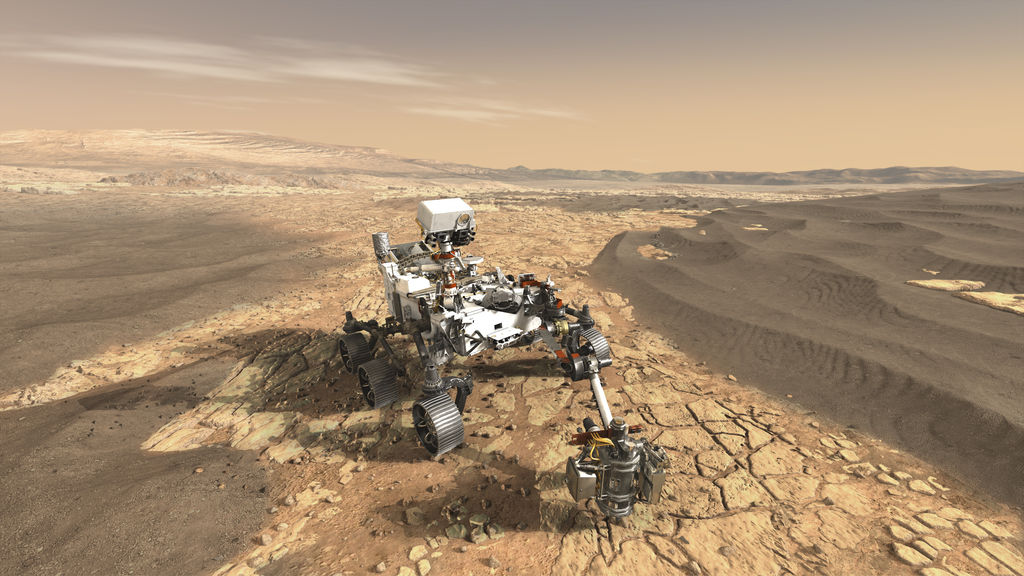NASA Is Finally Funding a Mars Sample Return Mission, But Details Are Slim
It could launch in 2026!

President Donald Trump's NASA budget request for the 2020 fiscal year includes funding for a Mars sample return mission that could launch as soon as 2026, the space agency's chief Jim Bridenstine said today (March 11).
The mission would fetch rock samples packed up by the agency's Mars 2020 rover and bring them back to Earth for study in terrestrial labs. Such a mission has frequently been discussed, but not typically included on a budget request for the agency; NASA's concrete timeline for Mars science missions to Mars has always fizzled out after the Mars 2020 rover mission.
This year's budget request was billed as "Moon to Mars" and highlights components necessary for human space exploration, first in the context of the moon and then of Mars. "The moon is the proving ground; Mars is the horizon goal, and it requires an all-of-the-above approach," Bridenstine said during a news conference held today to unveil the budget request.
According to the budget proposal, NASA aims to spend $109 million in 2020 on "future Mars activities," much of that centered on early development work on a sample-return project, NASA's Deputy Chief Financial Officer Andrew Hunter told reporters in a teleconference today. That funding level would increase by hundreds of millions of dollars in subsequent years to continue the mission's development, he added.
Related: The Boldest Mars Missions in History
The agency has yet to release many details about the Mars sample return mission, which is nestled within a $2.6 billion budget request for planetary science as a whole for fiscal year 2020, which begins in October 2019 and listed to potentially launch by 2026. (Mars mission launches are typically timed to match the point when the planets are closest together, so missing this window would likely cause a two-year delay.) The budget documents released so far do not include breakdowns for individual missions.
The budget also fully funds the Mars 2020 mission, Bridenstine said during the news conference. That mission is scheduled to launch in the summer of 2020 and land Feb. 18, 2021. It includes not just the sample-caching rover, but also a helicopter designed to navigate Mars' thin atmosphere.
Get the Space.com Newsletter
Breaking space news, the latest updates on rocket launches, skywatching events and more!
That mission is easier to design than a sample-return mission, which must lift off Mars despite the planet's strong gravity and navigate back to Earth. No space agency has yet accomplished that feat at a planet — only at the moon and smaller bodies.
The president's budget request does not represent the funding NASA will actually receive; final appropriation amounts are determined by Congress.
- Why We Can't Depend on Robots to Find Life on Mars
- How NASA's Opportunity and Spirit Rovers Changed Mars Exploration Forever
- Mars Sample Return: How to Bring Red Planet Rocks to Earth
Email Meghan Bartels at mbartels@space.com or follow her @meghanbartels. Follow us on Twitter @Spacedotcom and on Facebook.
Join our Space Forums to keep talking space on the latest missions, night sky and more! And if you have a news tip, correction or comment, let us know at: community@space.com.

Meghan is a senior writer at Space.com and has more than five years' experience as a science journalist based in New York City. She joined Space.com in July 2018, with previous writing published in outlets including Newsweek and Audubon. Meghan earned an MA in science journalism from New York University and a BA in classics from Georgetown University, and in her free time she enjoys reading and visiting museums. Follow her on Twitter at @meghanbartels.









